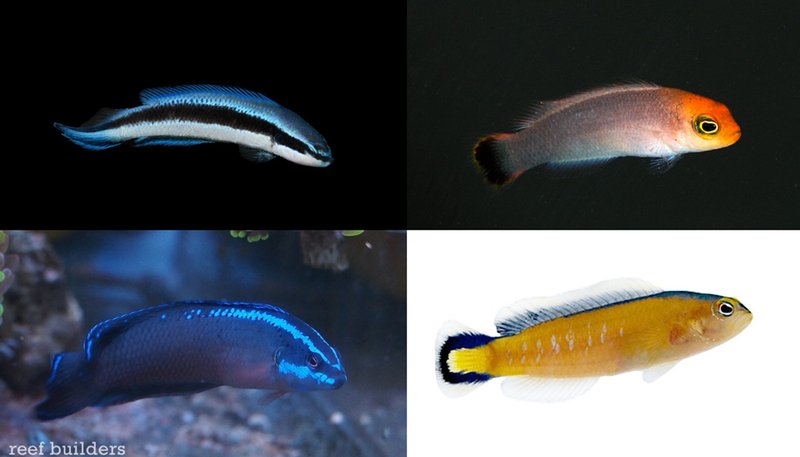
Dottybacks, particularly the Purple Dottyback (*Pictichromis paccagnellae*), are popular among reef aquarium keepers due to their striking appearance and interesting behaviors. However, breeding them isn’t as straightforward as it may seem. In this article, we’ll dive deep into the challenges you might face as well as some practical tips to boost your breeding efforts.
Understanding Dottyback Behavior
To breed dottybacks successfully, you need to first explore their natural behavior. These fish are known for being territorial and sometimes aggressive, especially during breeding season. Think of them as the high-maintenance divas of the fish world. Males can be quite defensive of their nesting sites, which can create a bit of a soap opera in your aquarium.
It’s essential to provide enough space and hiding spots in your tank. A well-planned environment helps reduce stress and keeps aggression in check. Consider adding live rock or other structures where the fish can establish territories without direct conflict. If you see your male swimming around proudly, chasing off any intruders, that’s a good sign that he’s feeling secure.
Creating A Breeding Environment
Once you’ve grasped the dottyback’s personality, the next step is setting up an ideal breeding environment. A typical tank size should be at least 30 gallons to allow breeding pairs ample space. Water quality is crucial here; keep it clean and stable. Regular water changes and proper filtration will go a long way.
Temperature should hover around 77-82°F (25-28°C), while salinity levels need to be maintained between 1.020 to 1.025. You might be wondering why this matters—well, dottybacks thrive in specific conditions, and maintaining these helps reduce stress, which is vital for successful breeding.
Choosing The Right Pair
Finding the right breeding pair can feel like matchmaking, and it can make or break your breeding attempts. Dottybacks are protandrous hermaphrodites, which means they start as males and can turn into females. To ensure successful breeding, it’s best to select a male-female pair.
Look for healthy specimens with vibrant colors. They should be active and displaying typical behaviors. Sometimes, you may need to introduce a few males to your female, as she might show a preference for one. This process can take time, so be patient. Once you see them pairing up, you’re off to a great start!
Introducing New Fish to The Tank
When introducing new dottybacks to your established tank, don’t just throw them in. It’s like a new kid joining a school; a proper introduction is necessary. You can use a quarantine tank for a few weeks to monitor health and behavior.
After quarantine, make the introduction during low-light periods or when the tank is less active. This way, the current occupants are less likely to feel threatened. Keep an eye on them for a while—you want to ensure that all fish are getting along before considering breeding.
Breeding Process: What To Expect
Once you have a bonded pair, it’s time to watch for the breeding process to unfold. Dottybacks typically lay eggs in the early morning or late evening, and the female will lay her eggs on a flat surface, usually among the rocks or under a ledge. The male then fertilizes them.
You might find the male guarding the eggs. It’s fascinating to watch him fan the eggs to keep them clean and oxygenated. This parental behavior can last for about 7-10 days, depending on the water temperature and conditions.
Egg Care and Hatching
After the eggs are laid, it’s crucial to keep the tank’s conditions stable. If things start to shift, you might end up with a failed hatch. The eggs are susceptible to fungus, so keeping the water clean and free from contaminants is necessary.
Once the eggs hatch, the fry will remain anchored to the substrate for a few days, living off their yolk sacs. After this period, they’ll need to be fed. This is where the fun begins! You’ll want to provide infusoria or fine powdered foods until they can eat larger foods like brine shrimp.
Common Challenges in Breeding Dottybacks
Breeding dottybacks isn’t without its challenges. One common issue is the aggression levels that can spike during the breeding process. If your breeding pair feels threatened, they might abandon their eggs. Keeping tank mates appropriate and minimizing stress is key.
Another hurdle is ensuring the fry survive after hatching. In the wild, the survival rate is low, and it can be similar in captivity if you’re not prepared. You might need to separate the fry from the adults to avoid predation, as dottybacks are known to eat their young.
Tips For Success
To boost your chances, consider these tips:
- Maintain Water Quality: Regular water tests can help you catch any shifts early.
- Minimize Stress: Provide plenty of hiding spots and reduce activity in the tank during breeding.
- Monitor Nutrition: A well-fed pair is more likely to breed successfully.
- Be Patient: It can take time to find the right pair and get them to breed.
Breeding dottybacks in captivity can be a complex but rewarding endeavor. With a little patience and attention to detail, you’ll be well on your way to successfully nurturing these stunning fish. Remember to pay attention to their unique behaviors, create a comfortable breeding environment, and stay on top of water quality.
It’s all about creating a harmonious home for your dottybacks. Every challenge you face will teach you something new and bring you closer to the joy of watching your own little underwater family thrive. So grab your nets, and get ready for an exciting journey into the world of dottyback breeding!

